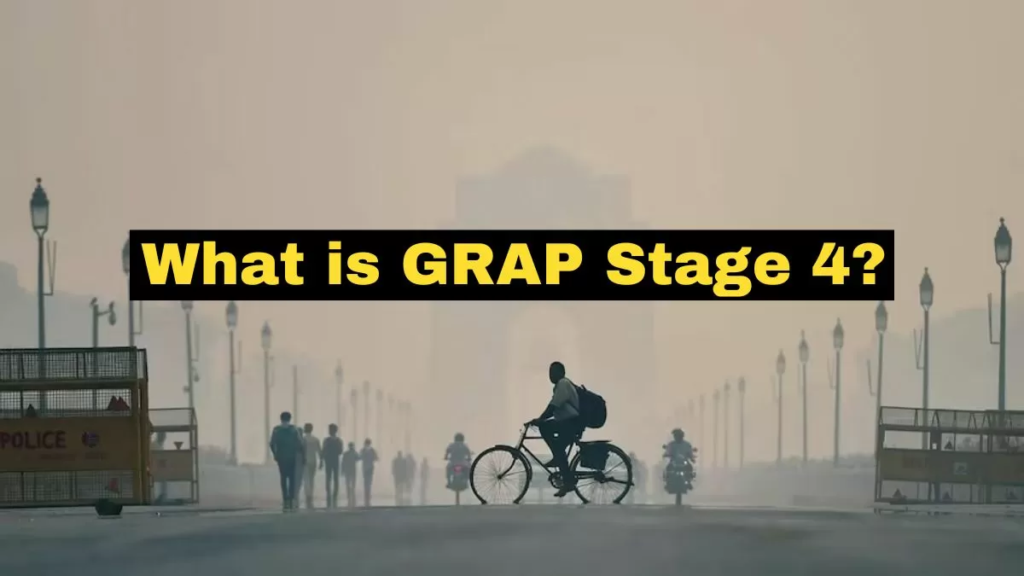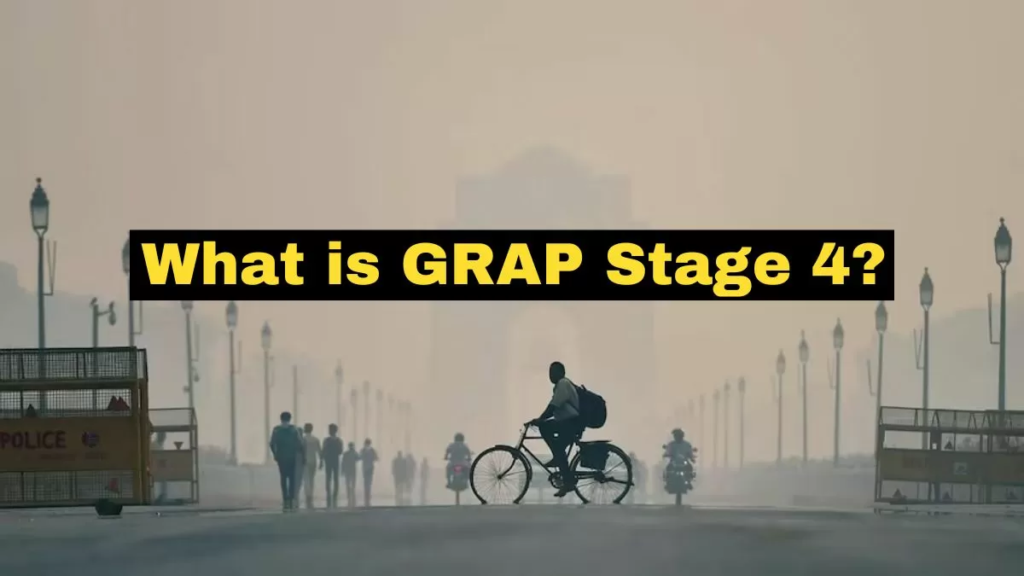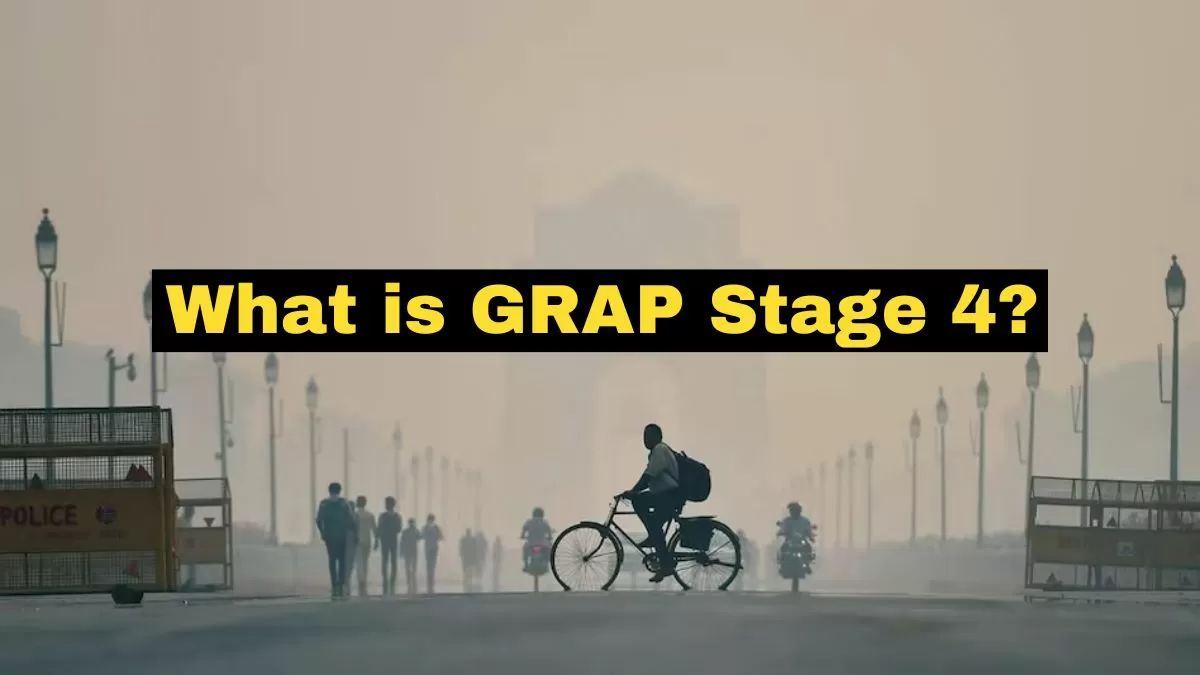In recent years, air pollution has become a significant concern in India, especially in metropolitan cities like Delhi and Gurugram. To tackle this crisis, the Graded Response Action Plan (GRAP) was introduced. GRAP is a set of emergency measures designed to combat air pollution during different levels of severity. Among its stages, GRAP 4 is the most stringent, activated when air quality reaches the “Severe+” or emergency category.
This blog dives deep into GRAP 4, explaining what it is, when it’s implemented, its measures, and its impact on daily life.
What is GRAP?

The Graded Response Action Plan (GRAP) was introduced by the Central Pollution Control Board (CPCB) in 2017 under the guidance of the Supreme Court of India. The plan is implemented in the National Capital Region (NCR) and includes steps to address pollution levels categorized as:
- Moderate to Poor
- Very Poor
- Severe
- Severe+ or Emergency
Each category triggers a specific set of actions to curb pollution, ranging from public advisories to shutting down industries. GRAP ensures that authorities take proactive steps to safeguard public health, especially during high-pollution months from October to February.
What is GRAP 4?
GRAP 4 is the final and most extreme level of action under the Graded Response Action Plan. It is triggered when the Air Quality Index (AQI) crosses the threshold of 450 and reaches the “Severe+” category. This indicates a public health emergency where pollution levels pose serious health risks to the population.
When is GRAP 4 Implemented?
GRAP 4 is typically implemented during the winter months when pollution spikes due to several factors, including:
- Stubble Burning: Crop residue burning in neighboring states like Punjab and Haryana significantly impacts NCR’s air quality.
- Vehicular Emissions: Increased traffic and vehicular emissions contribute to worsening air quality.
- Weather Conditions: Low wind speeds and temperature inversion trap pollutants closer to the ground.
- Industrial Emissions: Unchecked emissions from factories further exacerbate the problem.
Key Measures Under GRAP 4
When GRAP 4 is activated, authorities enforce drastic measures to reduce pollution. These measures include:
1. Complete Ban on Construction Activities
To control dust pollution, all construction and demolition activities are halted. This includes roadworks, excavation, and infrastructure projects.
2. Shutdown of Industries
Industries using polluting fuels are temporarily shut down. Only those industries manufacturing essential commodities or using cleaner fuels like PNG are allowed to operate.
3. Closure of Schools and Workplaces
During severe pollution emergencies, schools may be closed, and employees are encouraged to work from home to reduce outdoor exposure.
4. Ban on Private Vehicles
Private vehicles, especially diesel-run cars, may be restricted. Authorities promote carpooling, public transport, and odd-even vehicle schemes to reduce traffic emissions.
5. Enhanced Public Transport
Public transport services like buses and metro trains are increased to accommodate the additional demand.
6. Ban on Entry of Trucks
Non-essential trucks are prohibited from entering Delhi and NCR. Only trucks carrying essential goods are allowed.
7. Water Sprinkling and Dust Suppression
Municipal authorities are directed to use water sprinklers and anti-smog guns to reduce airborne dust particles.
How GRAP 4 Affects Daily Life
The implementation of GRAP 4 significantly impacts daily life in the affected regions. Here’s how:
- Restricted Mobility: With bans on private vehicles and truck entry, commuting becomes challenging for many residents.
- Economic Impact: Industries and construction halts can lead to economic losses and affect daily wage workers.
- Health Concerns: The severe pollution levels make it unsafe to venture outdoors, especially for children, the elderly, and those with respiratory issues.
- Education: School closures disrupt learning schedules for students.
- Lifestyle Changes: Residents are advised to use air purifiers, wear masks, and avoid outdoor activities.
Effectiveness of GRAP 4
The success of GRAP 4 depends on strict implementation and public cooperation. While it has helped bring temporary relief in the past, critics argue that it is a reactive approach rather than a long-term solution. The plan addresses pollution symptoms but does not tackle the root causes, such as:
- Dependence on fossil fuels
- Inadequate waste management
- Urban planning issues
Despite its limitations, GRAP 4 remains an essential emergency tool to prevent air quality from deteriorating further during the pollution season.
What Can Citizens Do During GRAP 4?
While GRAP 4 imposes restrictions, citizens also play a crucial role in controlling pollution. Here are some actions individuals can take:
- Use Public Transport: Opt for buses or metro services instead of private vehicles.
- Avoid Burning Waste: Refrain from burning dry leaves, garbage, or other waste materials.
- Plant Trees: Support afforestation efforts and grow indoor plants that purify air, such as peace lilies or snake plants.
- Conserve Energy: Reduce electricity consumption to lower the demand on power plants.
- Spread Awareness: Educate others about the importance of reducing air pollution.
Long-Term Solutions to Prevent GRAP 4 Scenarios
To ensure cleaner air and avoid GRAP 4 emergencies in the future, a comprehensive approach is required. Some long-term strategies include:
1. Switch to Cleaner Fuels
Promoting electric vehicles (EVs) and renewable energy sources can significantly reduce emissions.
2. Improve Public Transport
Expanding and modernizing public transport infrastructure will encourage more people to use it, reducing private vehicle dependency.
3. Better Waste Management
Efficient disposal and recycling systems can prevent waste burning, a major source of pollution.
4. Regulate Industries
Strict monitoring and penalties for industries violating pollution norms can ensure compliance with environmental standards.
5. Promote Afforestation
Increasing green cover in urban areas can help absorb pollutants and improve air quality.





